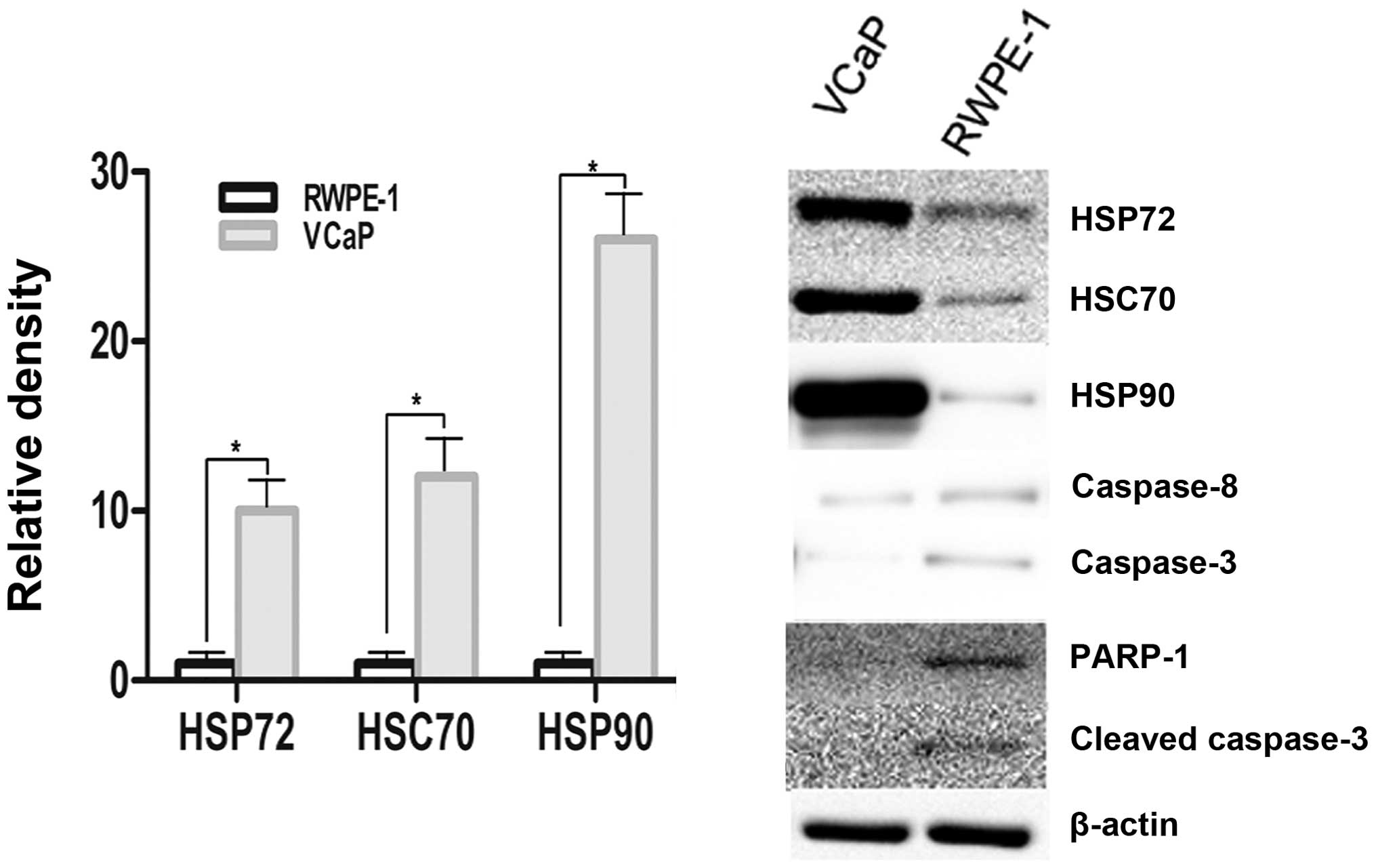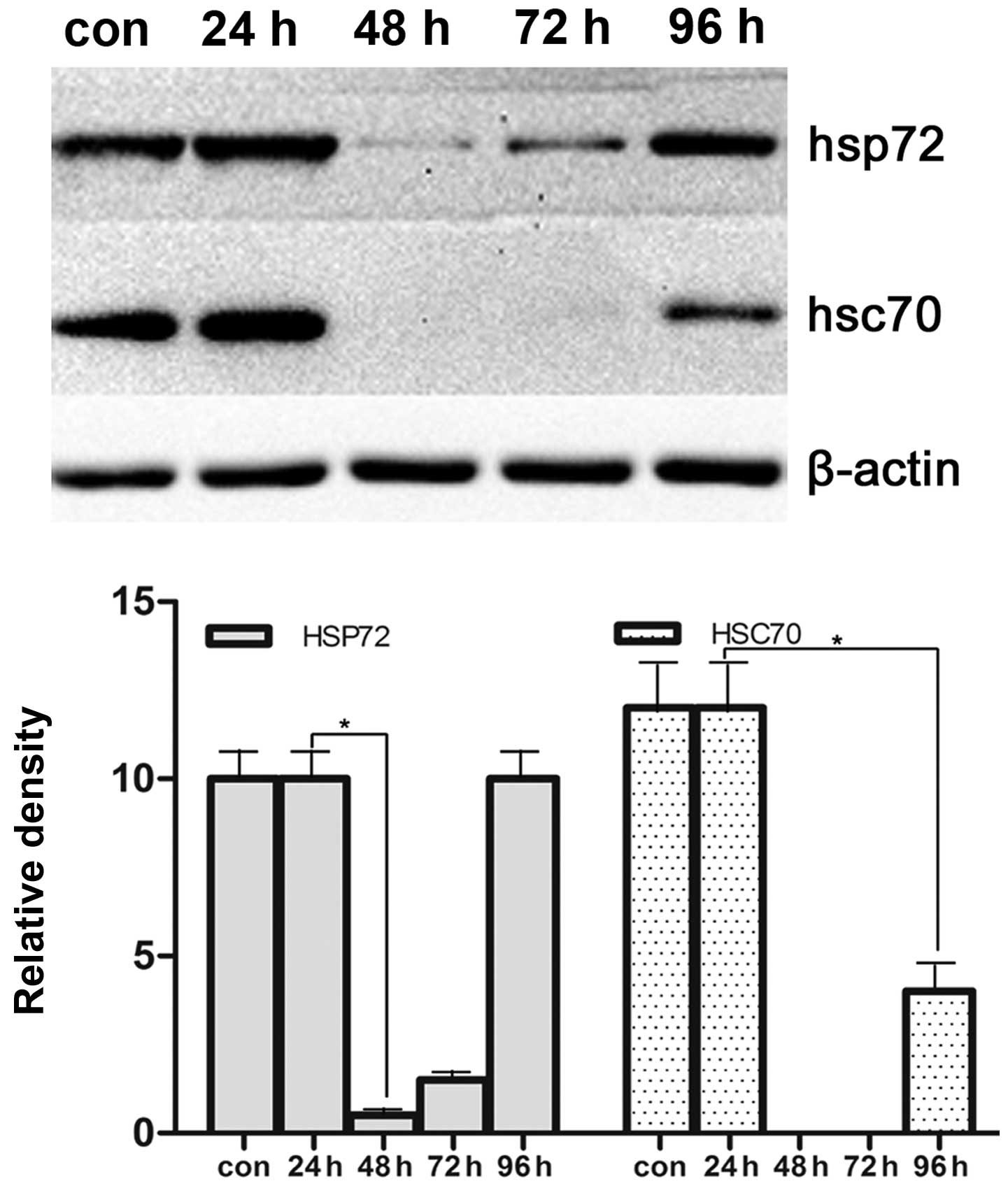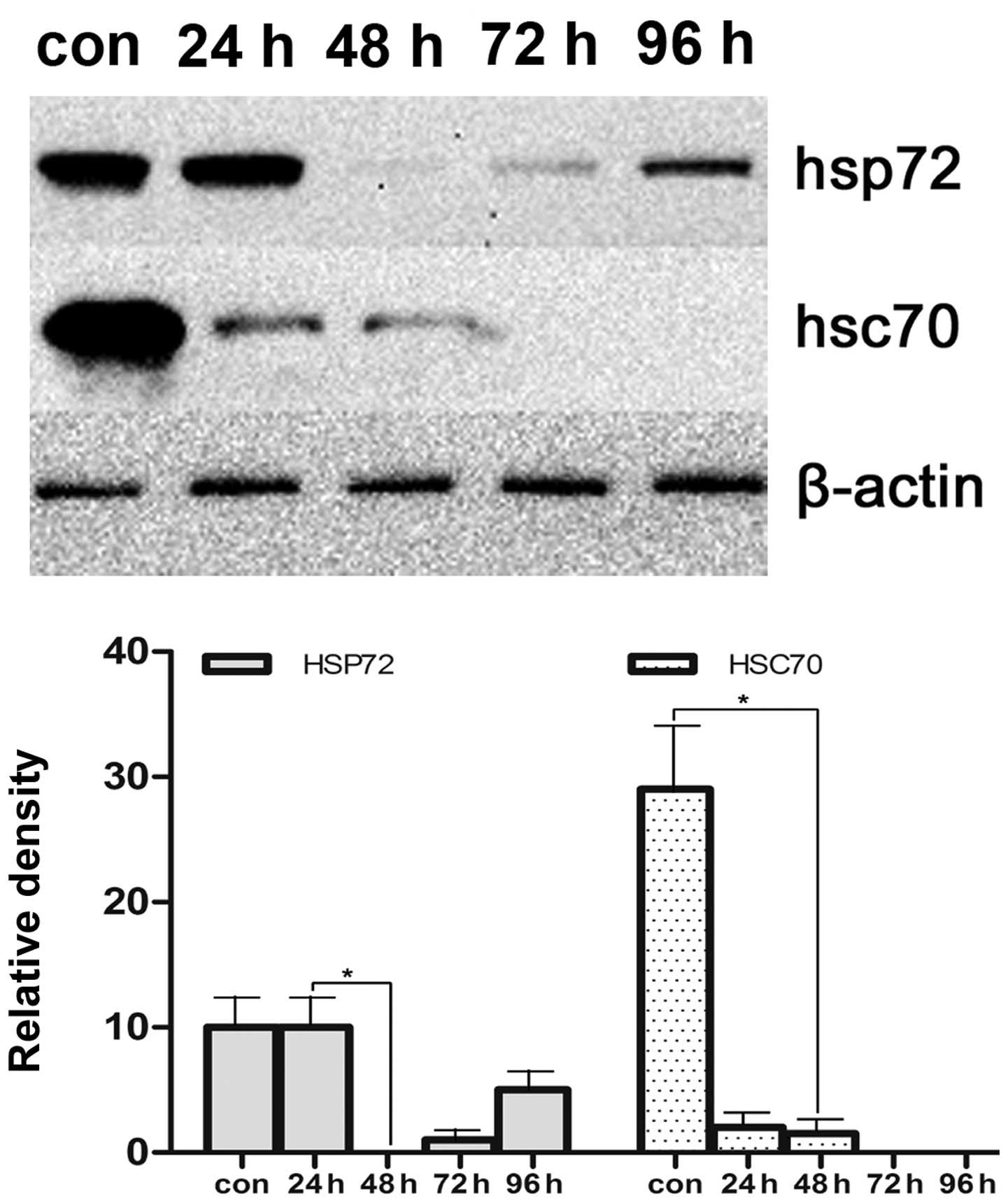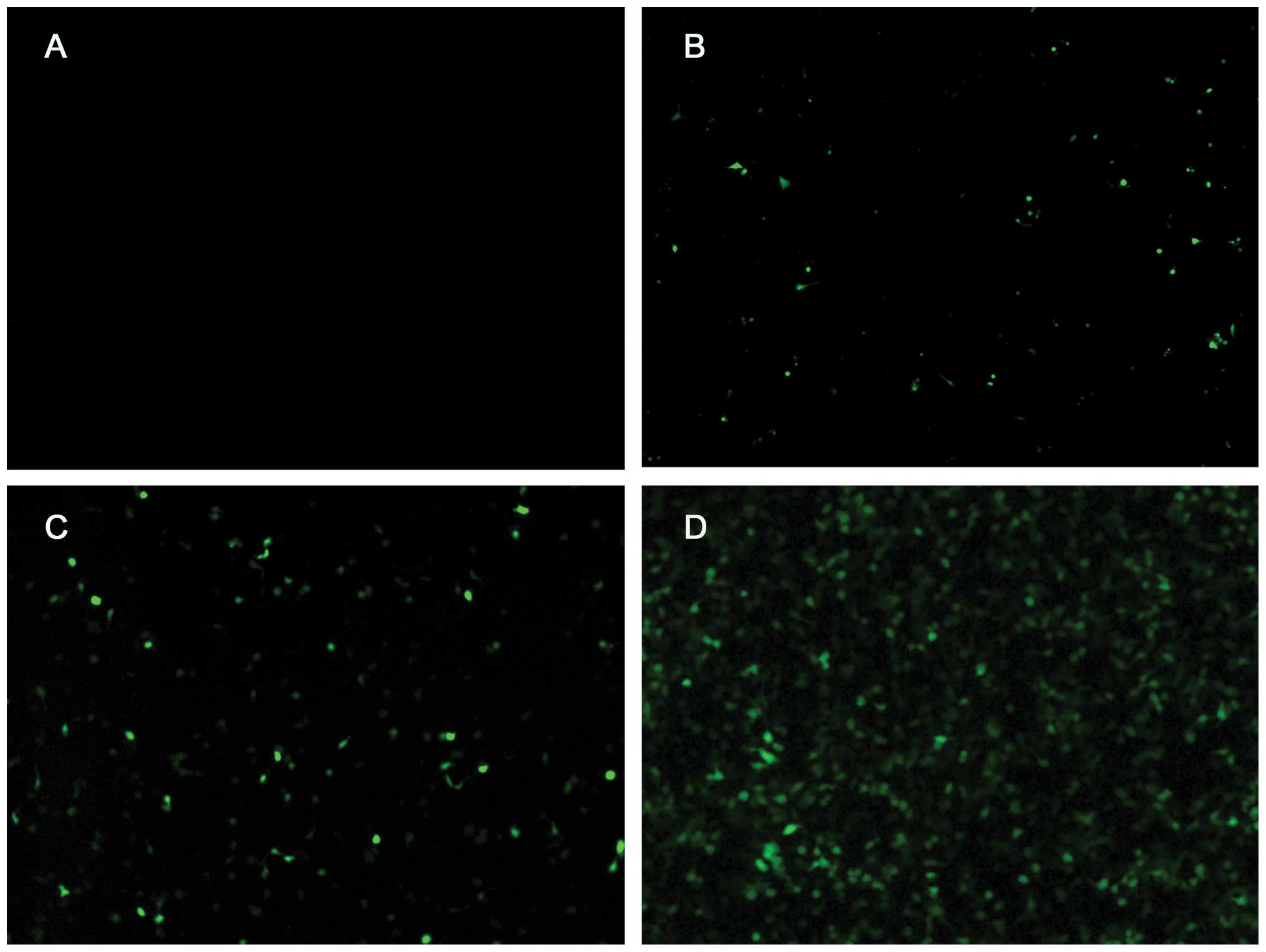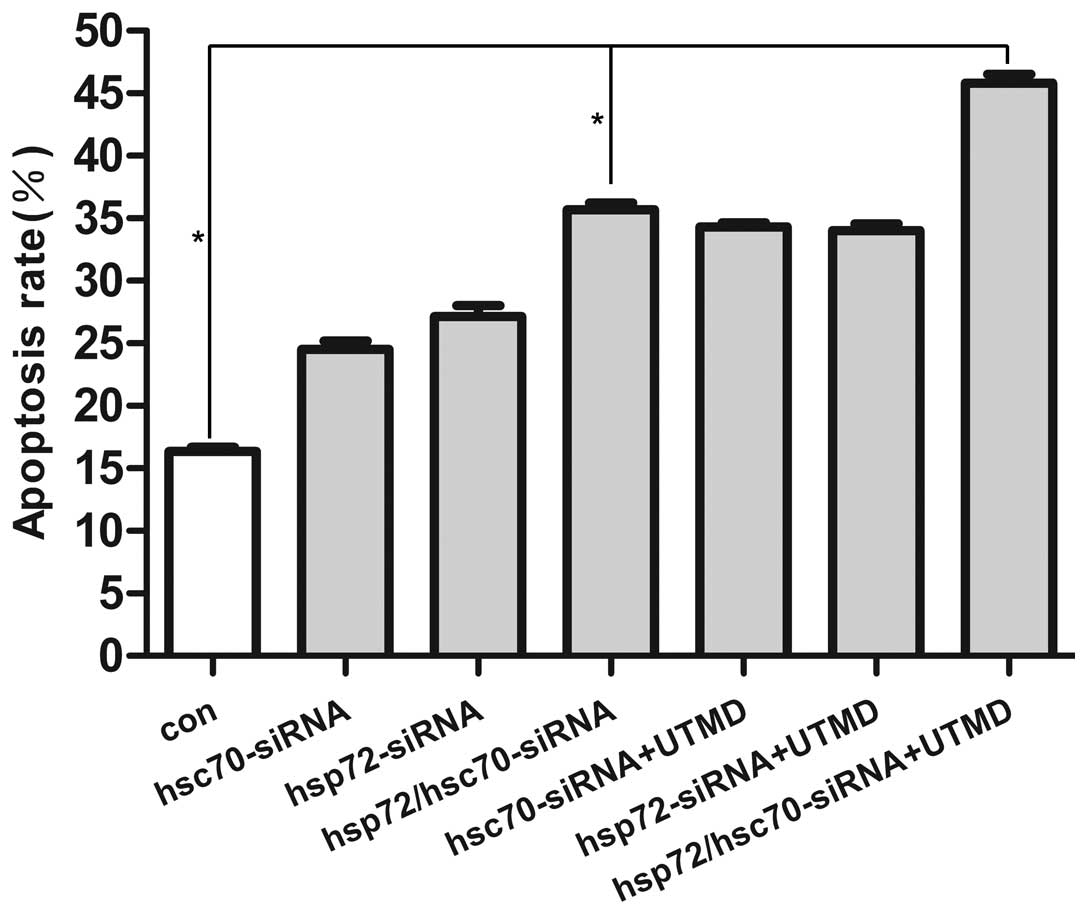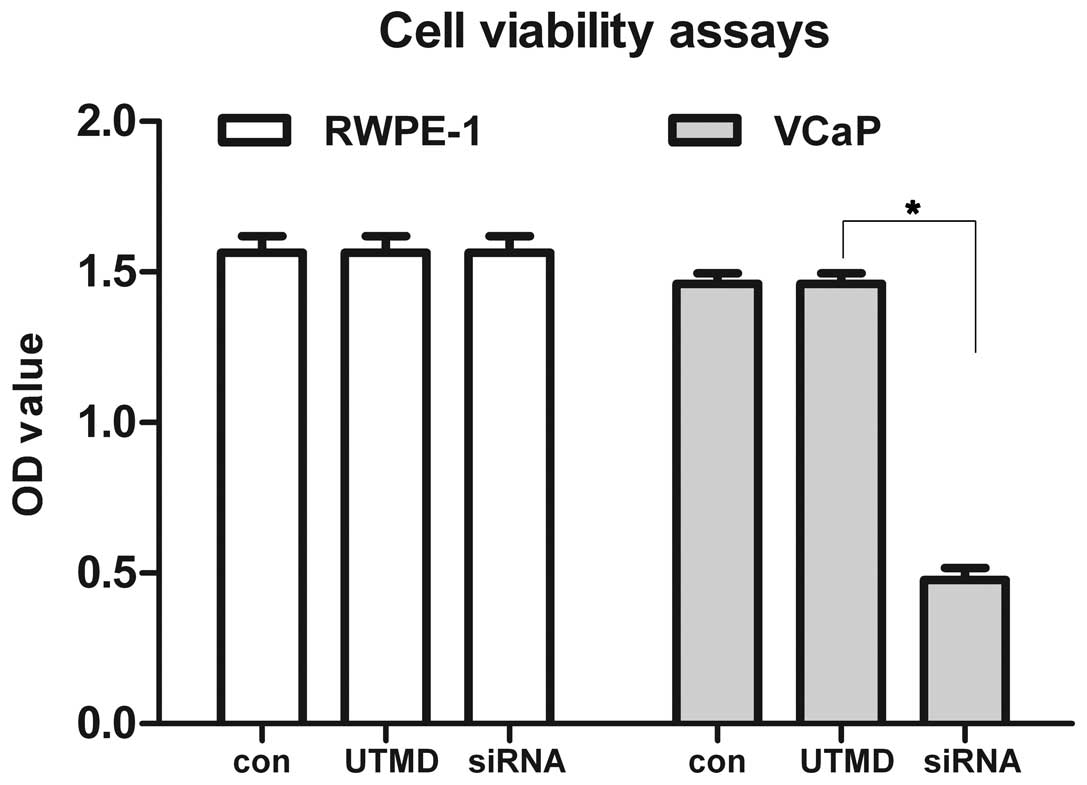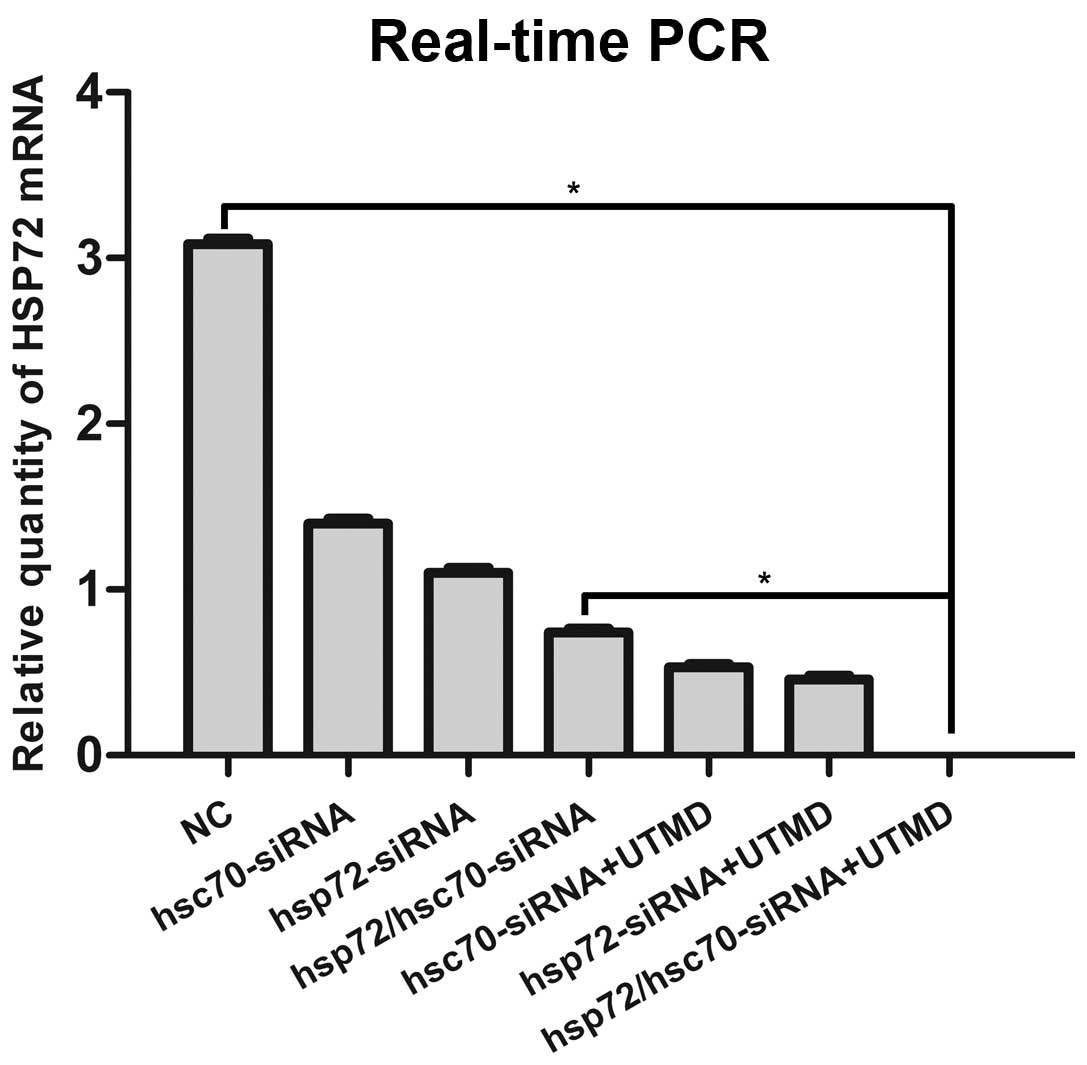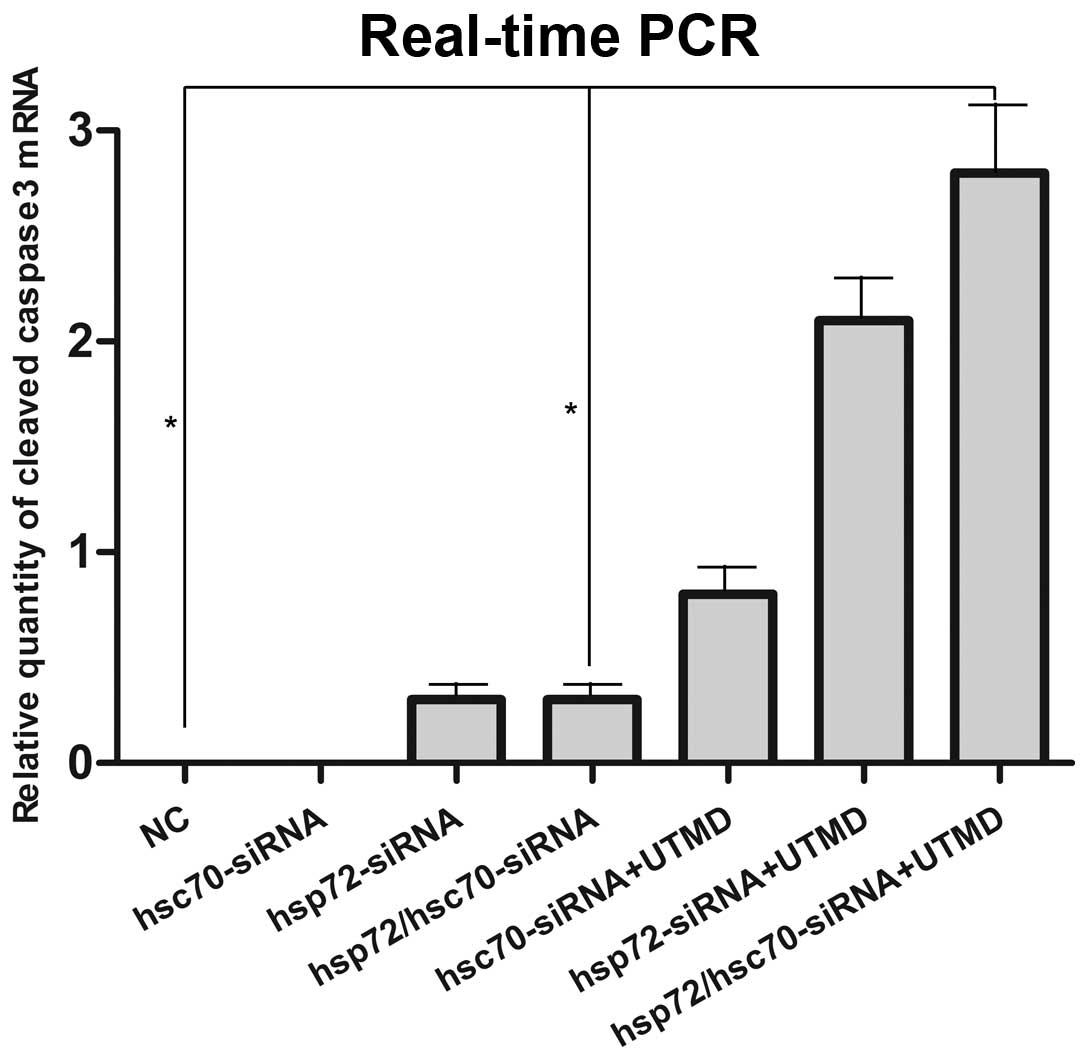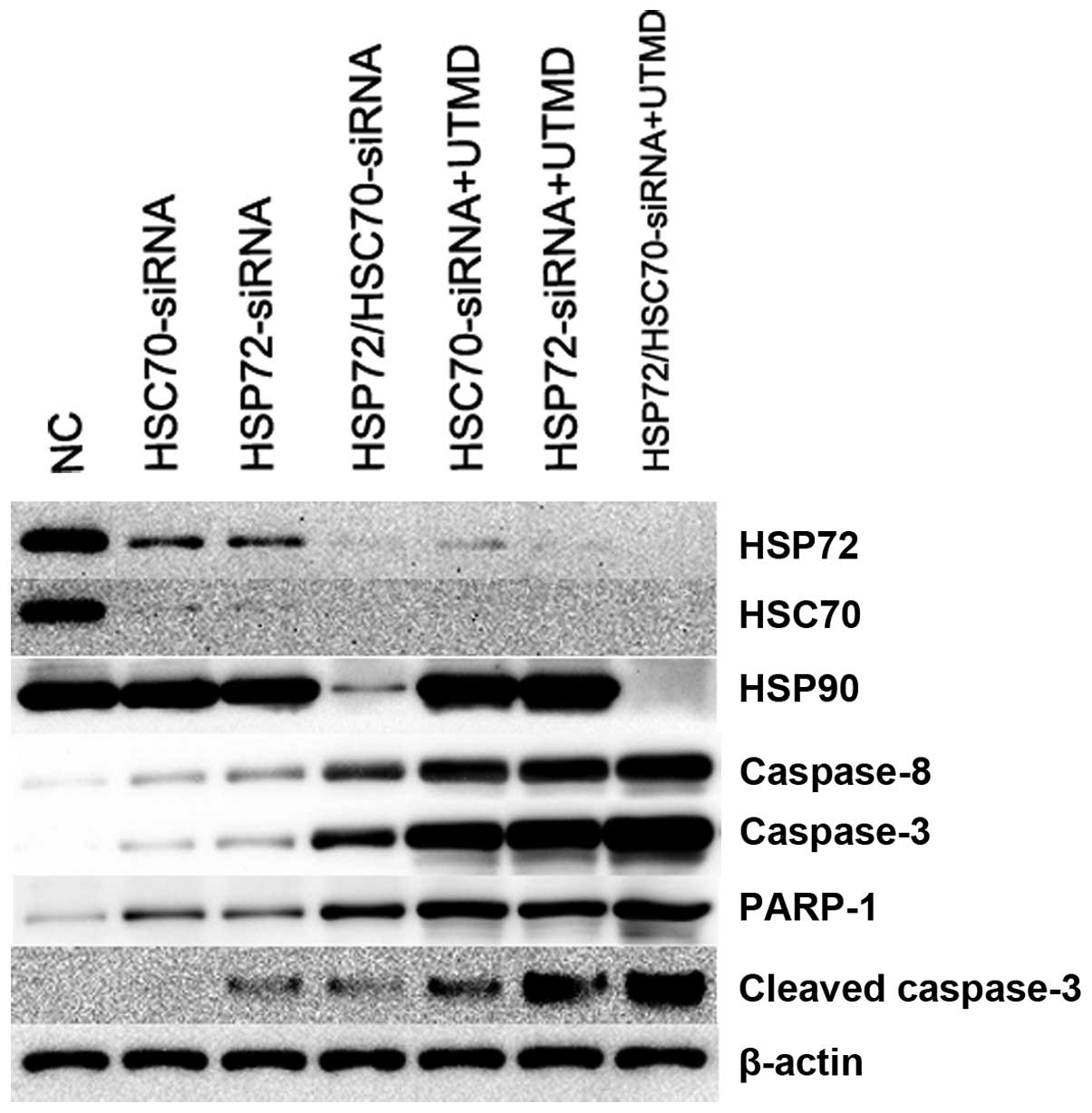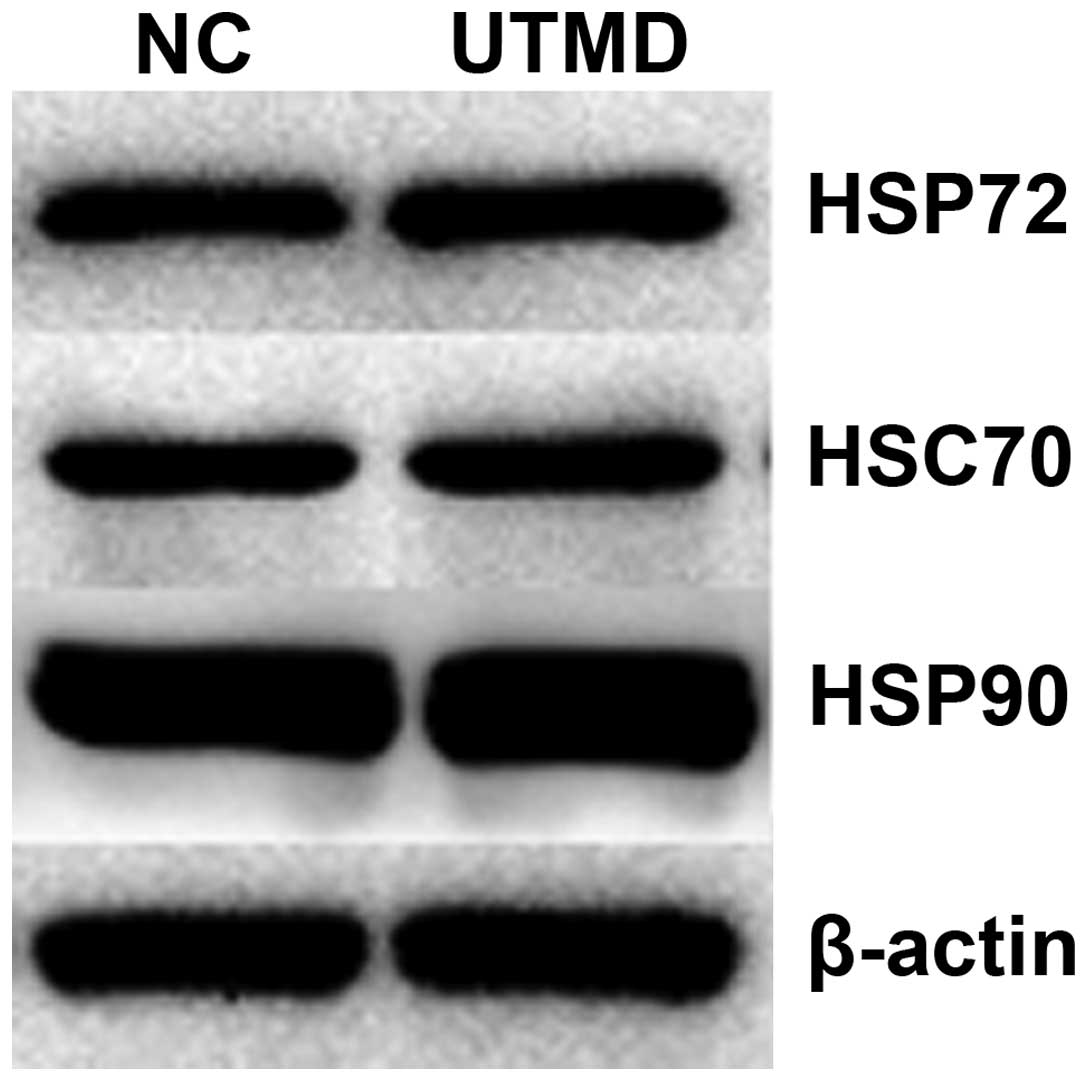|
1.
|
Siegel R, Ma J, Zou Z, et al: Cancer
statistics, 2014. CA Cancer J Clin. 64:9–29. 2014. View Article : Google Scholar
|
|
2.
|
DeSantis C, Naishadham D and Jemal A:
Cancer statistics for African Americans, 2013. CA Cancer J Clin.
63:151–166. 2013. View Article : Google Scholar : PubMed/NCBI
|
|
3.
|
Jemal A, Bray F, Center MM, et al: Global
cancer statistics. CA Cancer J Clin. 61:69–90. 2011. View Article : Google Scholar
|
|
4.
|
Bitting RL and Armstrong AJ: Targeting the
PI3K/Akt/mTOR pathway in castration-resistant prostate cancer.
Endocr Relat Cancer. 20:R83–R99. 2013. View Article : Google Scholar : PubMed/NCBI
|
|
5.
|
Garcia JA and Rini BI:
Castration-resistant prostate cancer: Many treatments, many
options, many challenges ahead. Cancer. 118:2583–2593. 2012.
View Article : Google Scholar : PubMed/NCBI
|
|
6.
|
McNamara JO II, Andrechek ER, Wang Y, et
al: Cell type-specific delivery of siRNAs with aptamer-siRNA
chimeras. Nat Biotechnol. 24:1005–1015. 2006. View Article : Google Scholar : PubMed/NCBI
|
|
7.
|
Daugaard M, Rohde M and Jäättelä M: The
heat shock protein 70 family: highly homologous proteins with
overlapping and distinct functions. FEBS Lett. 581:3702–3710. 2007.
View Article : Google Scholar : PubMed/NCBI
|
|
8.
|
Zuiderweg ER, Bertelsen EB, Rousaki A, et
al: Allostery in the Hsp70 chaperone proteins. Top Curr Chem.
328:99–153. 2013. View Article : Google Scholar : PubMed/NCBI
|
|
9.
|
Davenport EL, Zeisig A, Aronson LI, et al:
Targeting heat shock protein 72 enhances Hsp90 inhibitor-induced
apoptosis in myeloma. Leukemia. 24:1804–1807. 2010. View Article : Google Scholar : PubMed/NCBI
|
|
10.
|
Powers MV, Jones K, Barillari C, et al:
Targeting HSP70: the second potentially druggable heat shock
protein and molecular chaperone? Cell Cycle. 9:1542–1550. 2010.
View Article : Google Scholar : PubMed/NCBI
|
|
11.
|
Meng L, Hunt C, Yaglom JA, et al: Heat
shock protein Hsp72 plays role in Her2-induced mammary
tumorigenesis. Oncogene. 30:2836–2845. 2011. View Article : Google Scholar : PubMed/NCBI
|
|
12.
|
Stangl S, Gehrmann M, Riegger J, et al:
Targeting membrane heat-shock protein 70 (Hsp70) on tumors by
cmHsp70.1 antibody. Proc Natl Acad Sci USA. 108:733–738. 2011.
View Article : Google Scholar : PubMed/NCBI
|
|
13.
|
Evans CG, Chang L and Gestwicki JE: Heat
shock protein 70 (hsp70) as an emerging drug target. J Med Chem.
53:4585–4602. 2010. View Article : Google Scholar : PubMed/NCBI
|
|
14.
|
Balaburski GM, Leu JI, Beeharry N, et al:
A modified HSP70 inhibitor shows broad activity as an anticancer
agent. Mol Cancer Res. 11:219–229. 2013. View Article : Google Scholar : PubMed/NCBI
|
|
15.
|
Rérole AL, Gobbo J, De Thonel A, et al:
Peptides and aptamers targeting HSP70: a novel approach for
anticancer chemotherapy. Cancer Res. 71:484–495. 2011.
|
|
16.
|
Yao YD, Sun TM, Huang SY, et al: Targeted
delivery of PLK1-siRNA by ScFv suppresses HER2+ breast
cancer growth and metastasis. Sci Transl Med.
4:130ra482012.PubMed/NCBI
|
|
17.
|
Li HL, Zheng XZ, Wang HP, et al:
Ultrasound-targeted micro-bubble destruction enhances AAV-mediated
gene transfection in human RPE cells in vitro and rat retina in
vivo. Gene Ther. 16:1146–1153. 2009. View Article : Google Scholar : PubMed/NCBI
|
|
18.
|
Xie W, Liu S, Su H, et al: Ultrasound
microbubbles enhance recombinant adeno-associated virus vector
delivery to retinal ganglion cells in vivo. Acad Radiol.
17:1242–1248. 2010. View Article : Google Scholar : PubMed/NCBI
|
|
19.
|
Zheng X, Du L, Wang H and Gu Q: A novel
approach to attenuate proliferative vitreoretinopathy using
ultrasound-targeted microbubble destruction and recombinant
adeno-associated virus-mediated RNA interference targeting
transforming growth factor-β2 and platelet-derived growth factor-B.
J Gene Med. 14:339–347. 2012.PubMed/NCBI
|
|
20.
|
Suzuki R, Oda Y, Utoguchi N and Maruyama
K: Progress in the development of ultrasound-mediated gene delivery
systems utilizing nano- and microbubbles. J Control Release.
149:36–41. 2011. View Article : Google Scholar : PubMed/NCBI
|
|
21.
|
Tachibana K, Uchida T, Ogawa K, et al:
Induction of cell-membrane porosity by ultrasound. Lancet.
353:14091999. View Article : Google Scholar : PubMed/NCBI
|
|
22.
|
Boldin MP, Goncharov TM, Goltsev YV and
Wallach D: Involvement of MACH, a novel MORT1/FADD-interacting
protease, in Fas/APO-1- and TNF receptor-induced cell death. Cell.
85:803–815. 1996. View Article : Google Scholar : PubMed/NCBI
|
|
23.
|
Lazebnik YA, Kaufmann SH, Desnoyers S, et
al: Cleavage of poly(ADP-ribose) polymerase by a proteinase with
properties like ICE. Nature. 371:346–347. 1994. View Article : Google Scholar : PubMed/NCBI
|
|
24.
|
Pai SI, Lin YY, Macaes B, et al: Prospects
of RNA interference therapy for cancer. Gene Ther. 13:464–477.
2006. View Article : Google Scholar : PubMed/NCBI
|
|
25.
|
Daneshmand S, Quek ML, Lin E, et al:
Glucose-regulated protein GRP78 is up-regulated in prostate cancer
and correlates with recurrence and survival. Hum Pathol.
38:1547–1552. 2007. View Article : Google Scholar : PubMed/NCBI
|
|
26.
|
Pootrakul L, Datar RH, Shi SR, et al:
Expression of stress response protein Grp78 is associated with the
development of castration-resistant prostate cancer. Clin Cancer
Res. 12:5987–5993. 2006. View Article : Google Scholar : PubMed/NCBI
|
|
27.
|
Whitesell L and Lindquist SL: HSP90 and
the chaperoning of cancer. Nat Rev Cancer. 5:761–772. 2005.
View Article : Google Scholar : PubMed/NCBI
|
|
28.
|
Lebret T, Watson RW and Fitzpatrick JM:
Heat shock proteins: their role in urological tumors. J Urol.
169:338–346. 2003. View Article : Google Scholar : PubMed/NCBI
|
|
29.
|
Garrido C, Schmitt E, Candé C, et al:
HSP27 and HSP70: potentially oncogenic apoptosis inhibitors. Cell
Cycle. 2:579–584. 2003. View Article : Google Scholar
|
|
30.
|
McConnell JR and McAlpine SR: Heat shock
proteins 27, 40, and 70 as combinational and dual therapeutic
cancer targets. Bioorg Med Chem Lett. 23:1923–1928. 2013.
View Article : Google Scholar : PubMed/NCBI
|
|
31.
|
Alaiya AA, Oppermann M, Langridge J, et
al: Identification of proteins in human prostate tumor material by
two-dimensional gel electrophoresis and mass spectrometry. Cell Mol
Life Sci. 58:307–311. 2001. View Article : Google Scholar : PubMed/NCBI
|
|
32.
|
Mayer MP: Hsp70 chaperone dynamics and
molecular mechanism. Trends Biochem Sci. 38:507–514. 2013.
View Article : Google Scholar : PubMed/NCBI
|
|
33.
|
Lee E, Madar A, David G, et al: Inhibition
of androgen receptor and β-catenin activity in prostate cancer.
Proc Natl Acad Sci USA. 110:15710–15715. 2013.
|
|
34.
|
Powers MV, Clarke PA and Workman P: Dual
targeting of HSC70 and HSP72 inhibits HSP90 function and induces
tumor-specific apoptosis. Cancer Cell. 14:250–262. 2008. View Article : Google Scholar : PubMed/NCBI
|
|
35.
|
Rérole AL, Jego G and Garrido C: Hsp70:
anti-apoptotic and tumorigenic protein. Methods Mol Biol.
787:205–230. 2011.
|
|
36.
|
Earnshaw WC, Martins LM and Kaufmann SH:
Mammalian caspases: structure, activation, substrates, and
functions during apoptosis. Annu Rev Biochem. 68:383–424. 1999.
View Article : Google Scholar : PubMed/NCBI
|
|
37.
|
Tang NY, Huang YT, Yu CS, et al: Phenethyl
isothiocyanate (PEITC) promotes G2/M phase arrest via p53
expression and induces apoptosis through caspase- and
mitochondria-dependent signaling pathways in human prostate cancer
DU 145 cells. Anticancer Res. 31:1691–1702. 2011.
|
|
38.
|
Goloudina AR, Demidov ON and Garrido C:
Inhibition of HSP70: a challenging anti-cancer strategy. Cancer
Lett. 325:117–124. 2012. View Article : Google Scholar : PubMed/NCBI
|



